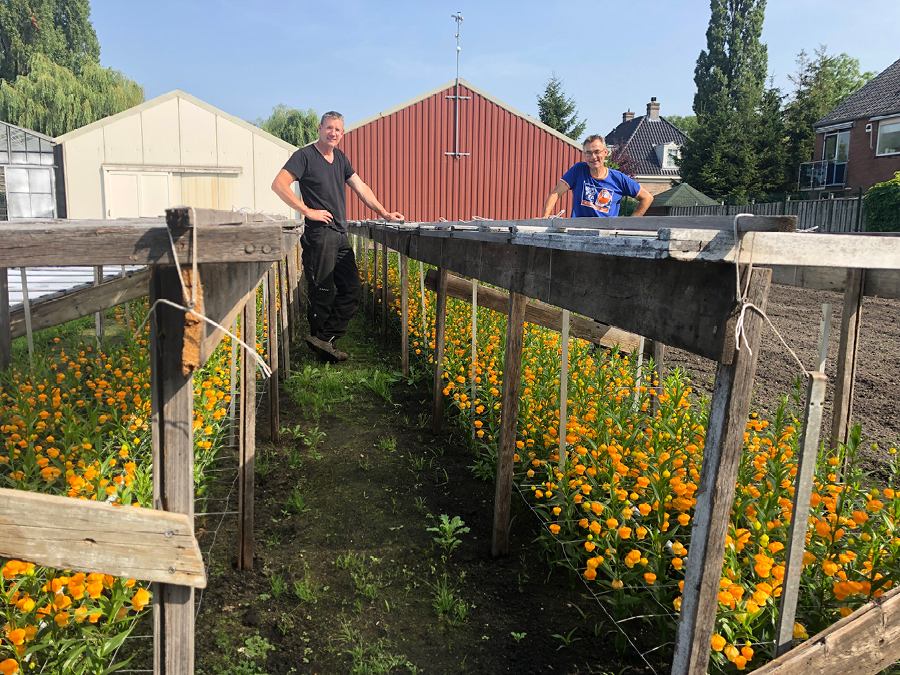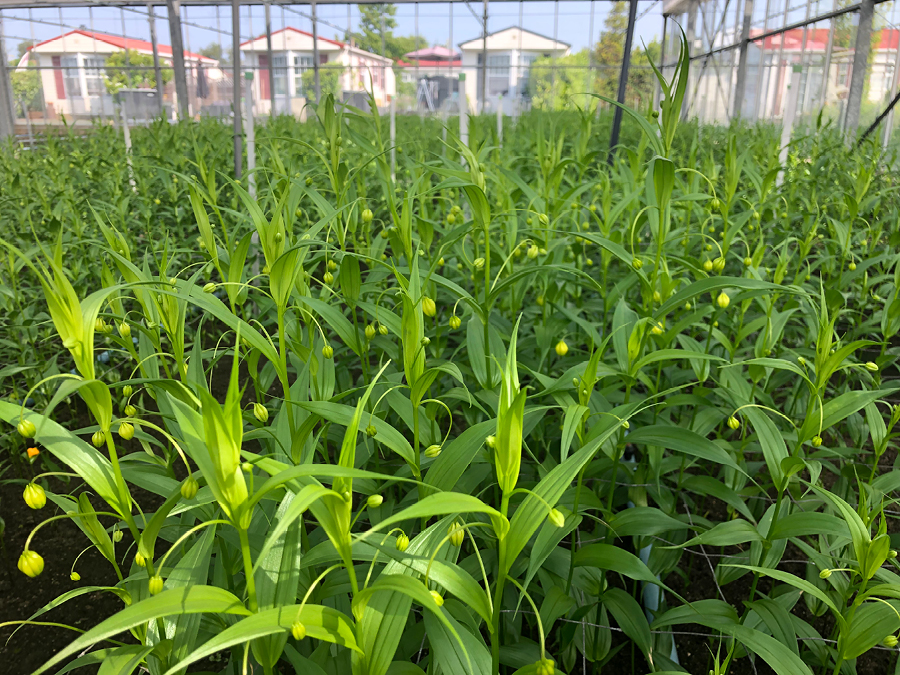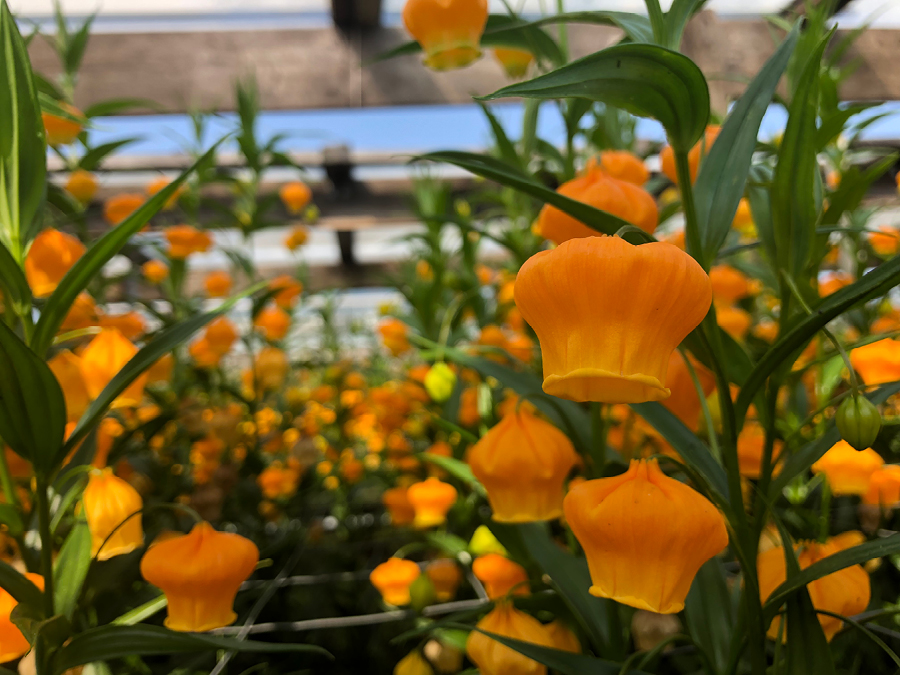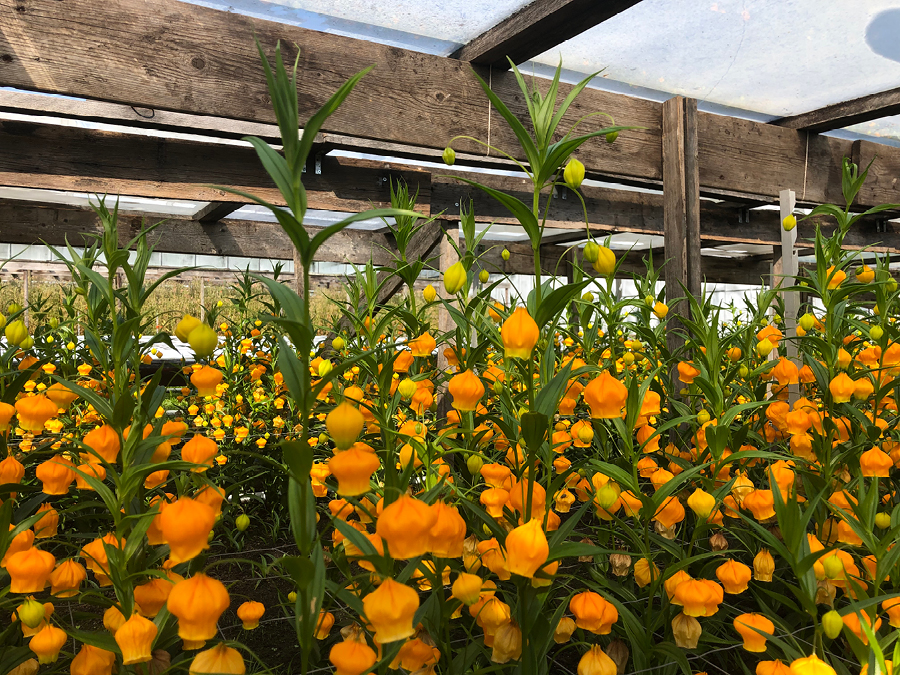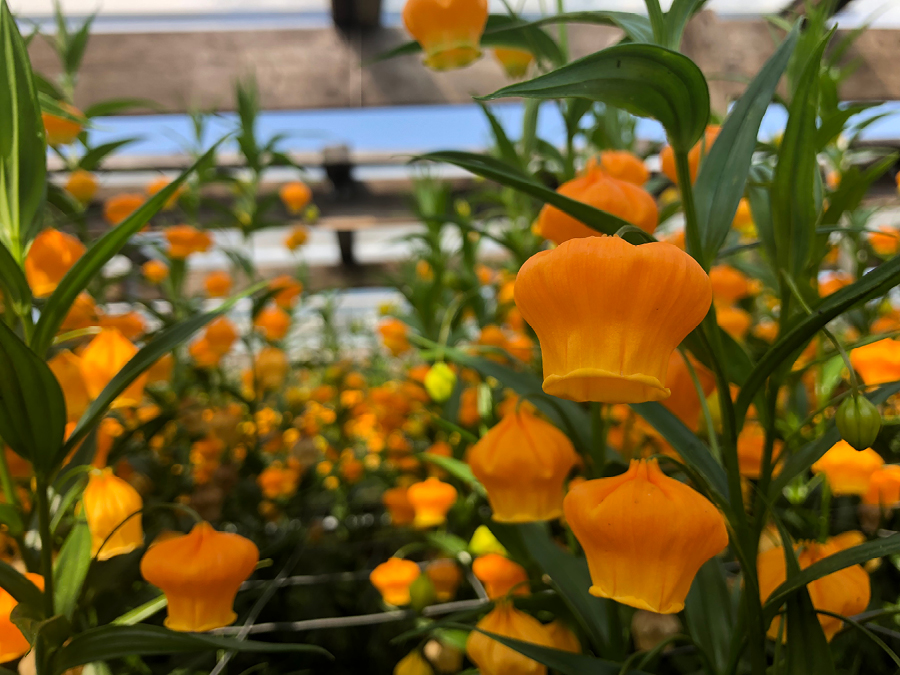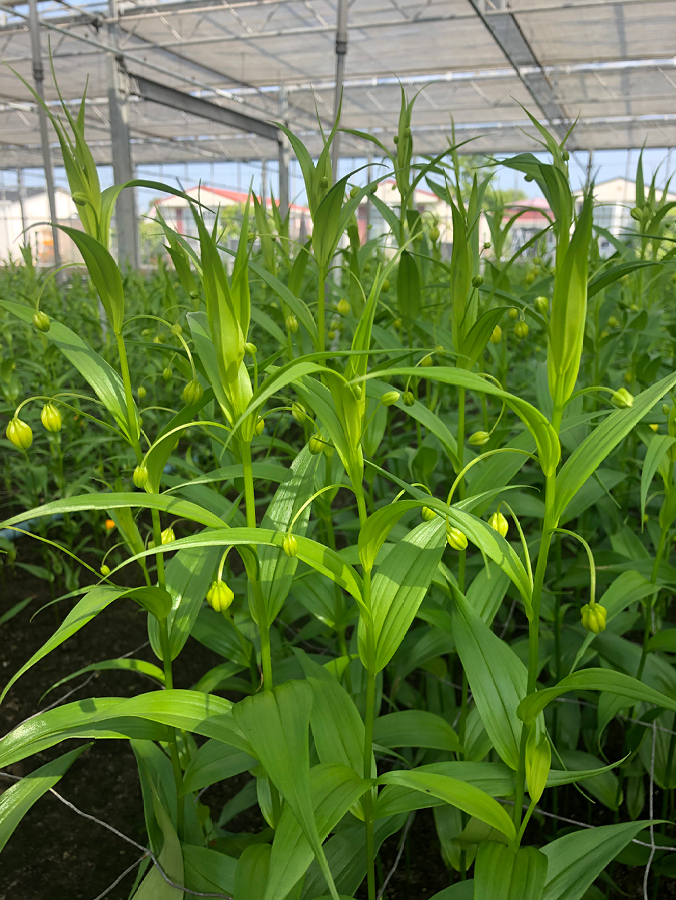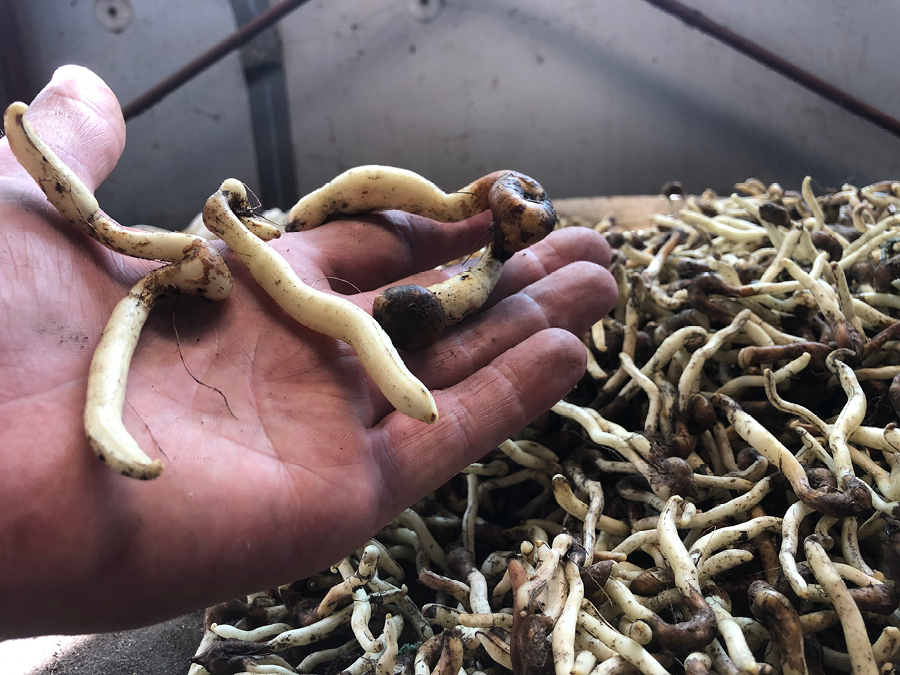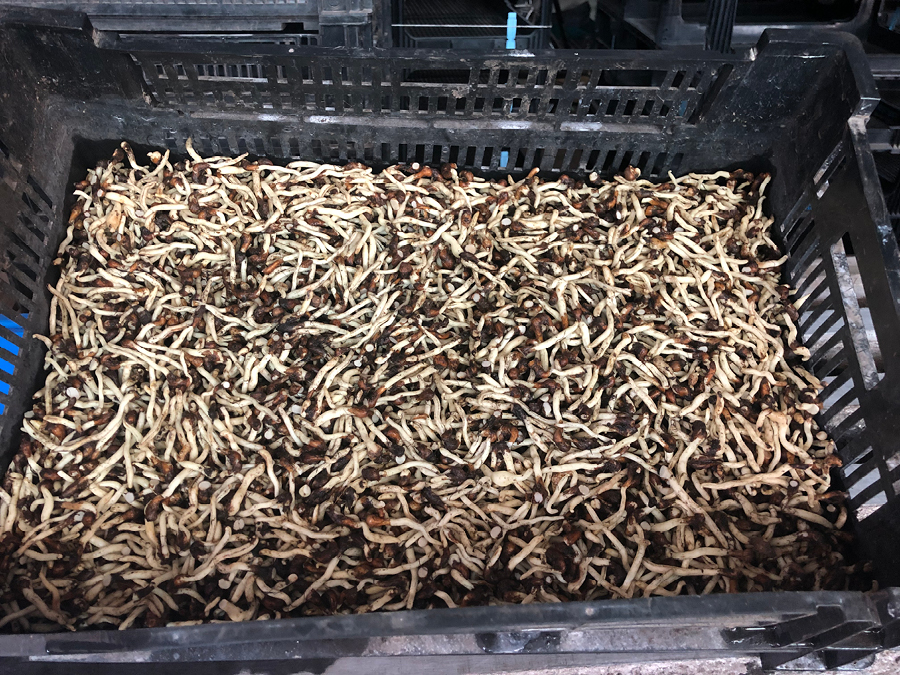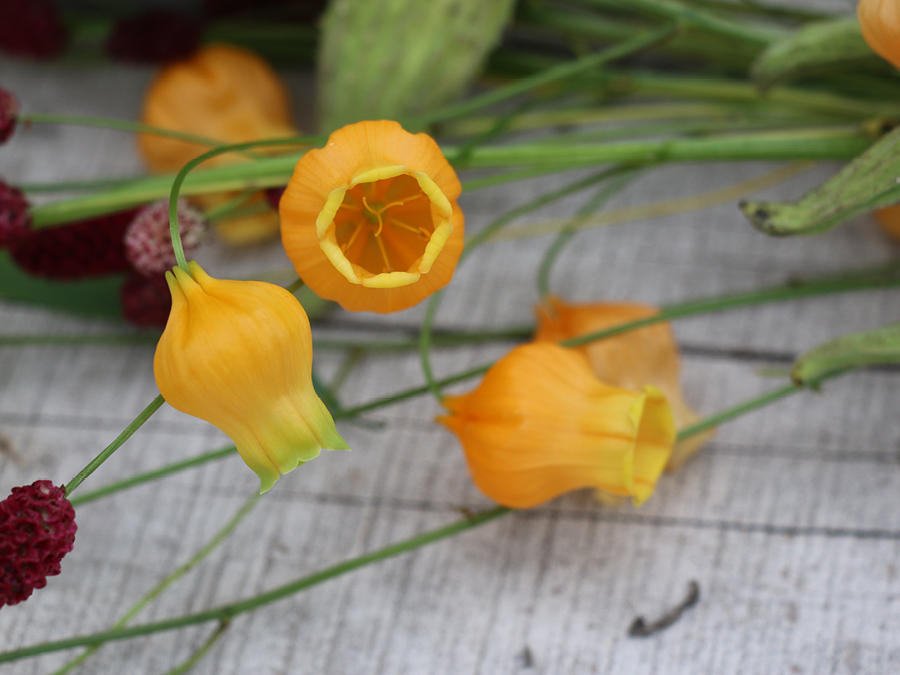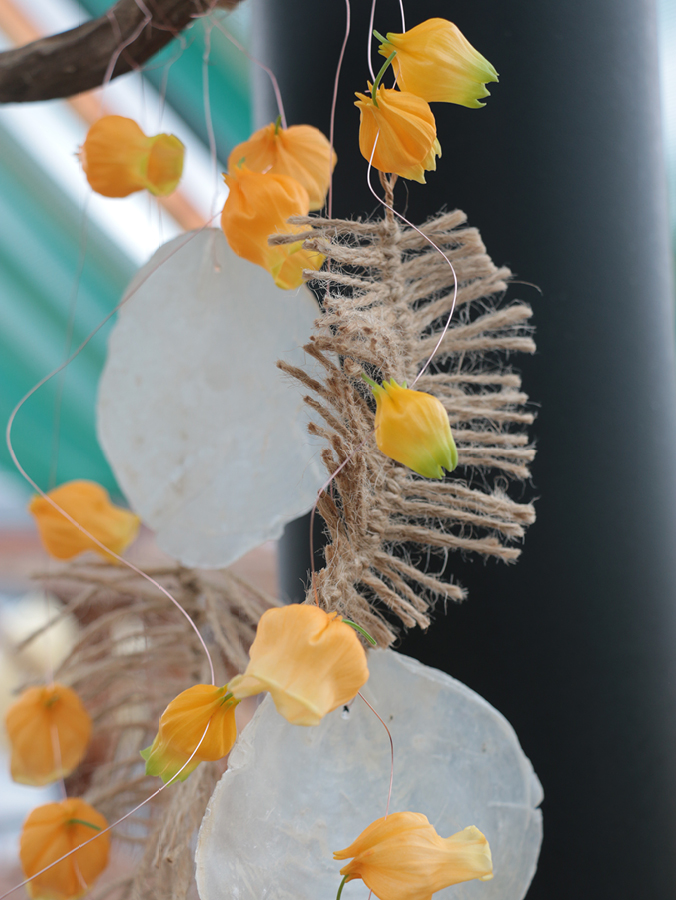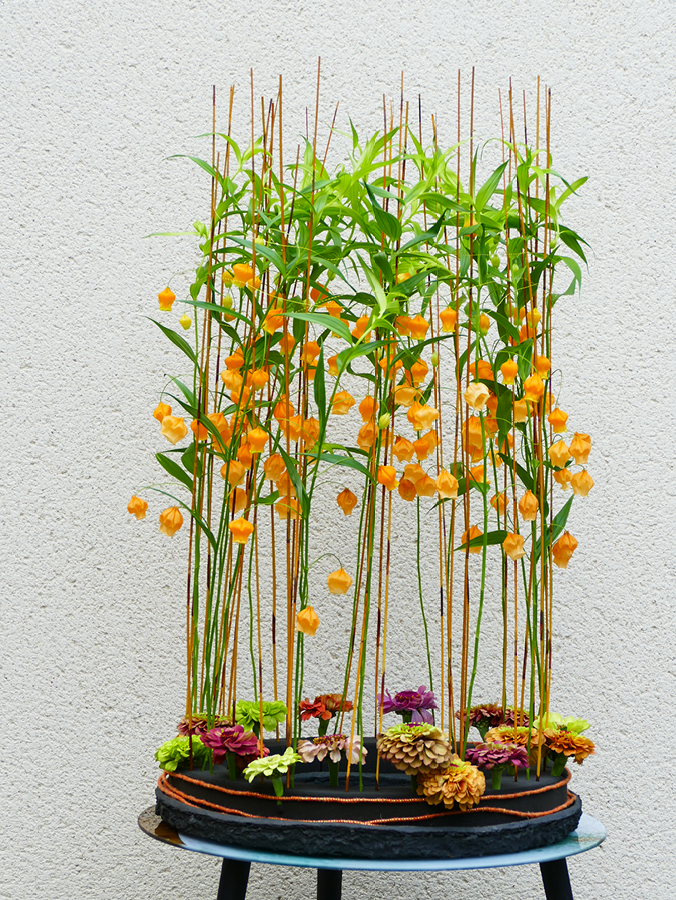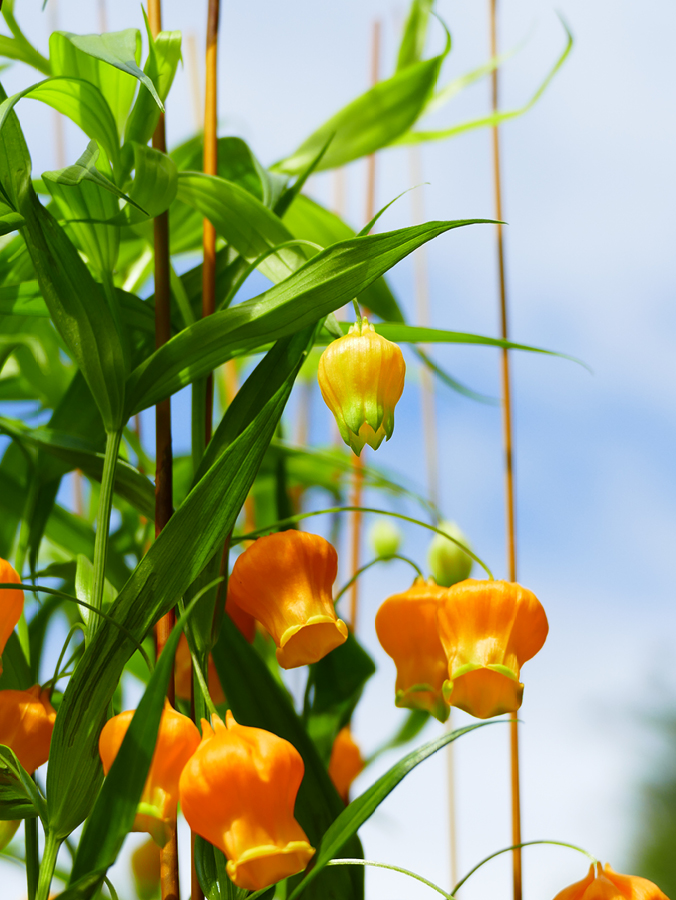Calendar
The flower is available from mid-May to October at nursery van der Zwet.
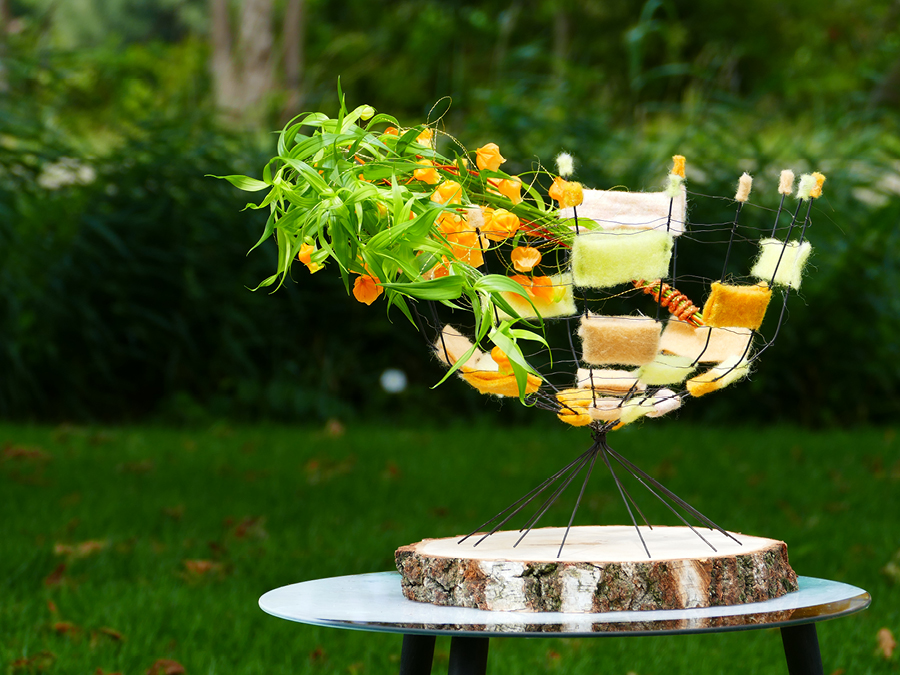
In the spotlights
When Rob van der Zwet's father arrived 40 years ago with a bag full of new seeds, he could have never imagined that those seeds would become the main crop in the years to come. 10 years after that day, the first Sandersonia aurantiacas were put into production. Rob tells us everything about the cultivation of this beautiful flower and how it is produced with lots of love, patience and craftsmanship.
Family of the Gloriosa
The Sandersonia aurantiaca originates from South Africa and grows there in the wild. If you see the flowers of the two genera Gloriosa and Sandersonia next to each other, you would not actually think that they are related. But if you critically compare the leaf and stem, you can see some similarities. Both the Gloriosa and Sandersonia belong to the Colchicaceae family. However, the Sandersonia does not grow as a climbing plant like the Gloriosa, but the tuber makes a stem from which the flowers grow.
Gracefully
The Sandersonia is very popular in bridal and other special flower arrangements. That is of course not for nothing. With its fragile stems and brightly colored lanterns, this lovely flower is really something special. For this reason it is also called the Chinese lantern. In addition, it has an exclusive tropical look which makes it a real eye catcher. It is indispensable in any summer bouquet or for any cheerful table decoration.
The cultivation of this small root vegetable is not the easiest crop so it falls into the exclusive range.
The cultivation
The nursery was started by Rob's grandfather; at the beginning they cultivated mainly lilies and altroemerias but his father was always looking for new and special flowers. He regularly bought bulbs, tubers and seeds of completely unknown species and products. With the bag of seeds from the Sandersonia, a new cultivation challenge arose for them. Rob nowadays provides the most beautiful branches of high-quality Sandersonia together with his partner Walter Verdel and his wife Lydia
Difficult cultivation
After Rob's father had managed to grow the Sandersonia from seeds, it took more than ten years before the flower really came into production. The Sandersonia is a root vegetable; the propagation is mainly from seed and by sharing the rhizome. In one year it is possible to multiply many tubers so that the following year half of the crop may have disappeared due to illnesses or other defects. It takes two years for usable tubers to grow from seeds. All tubers are harvested manually every year because the eye cannot be destroyed. This small tip on the tuber (the growing point), is very delicate and must not dry or damage. Every year they are busy harvesting and storing the tubers. The cultivation is as delicate and fragile as the flower itself.
Solid ground
The flower is grown mainly in the open ground in the greenhouse. Some of the tubers consciously allow Rob to flower for the production of new seeds and tubers. The bees help with this. That is why there is also a small piece of cultivation outside. Because the breed is extremely sensitive to diseases and weather, the soil is steamed every year. This greatly helps the production. At a first glance the Sandersonia looks like a climbing crop, but it is absolutely not the case. It grows in the air as a mono flower, not as a plant or shrub. The crop can be cut and processed a few weeks after planting the tubers.
Propagation
Originally all the flowers were bred by the company itself but Rob has stopped breeding and propagating the lilies and alstroemerias (but still grows Alstroemerias). He still breeds and grows the Sandersonia himself. The tuber grows every year again so Rob can re-use it. In addition to the orange version, there is one lighter version in pale yellow but he doesn't like it that much because cultivation is not very easy and this is also a challenge for Rob.
FloraPodium, 15 August 2019
